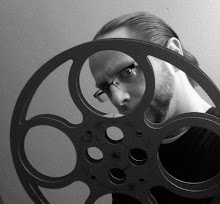This month marks the
40th anniversary of Steven Spielberg’s JAWS. Widely regarded as one
of the best films of all time, Reel Speak will celebrate this game-changing
film with a three-part blog. Part One (HERE) explored The Beginnings, Part Two (HERE) examined Why It Worked, and this week’s blog explores The
Legacy.
"I think he's come back for his noon feeding..."
The Legacy of Steven Spielberg’s JAWS began even before the
film swam into theatres in the early summer of 1975. Despite the film going
over its allotted production budget during filming, Universal Pictures spent a then-unheard
of $1.8 million in promoting the film, including another unprecedented $700K on
national television advertising. And even as early as October of 1974, over
eight months before release, author Peter Benchley and producers Richard D.
Zanuck and David Brown made their rounds on radio talk shows to promote the
film. It was an all-out media blitz which is very commonplace today, but a
brand new approach back then. It was a strategy which would begin JAWS’ legacy
as the very first summer “blockbuster”. Prior to JAWS, the standard for
Hollywood was to release high-profile films during the winter months, while
summer was put aside as a dumping ground for lousy pictures. With JAWS, a new
era had risen…a new U.S. film industry with high-concept, fun-at-the-theatre
films aimed at the fun summer months; the blockbuster had been born.
And bust those blocks it did. Opening with a $7 million
weekend, the film made back its production costs in two weeks of release. In
just 78 days, it overtook THE GODFATHER (1972) as the highest grossing film at
the North American box office. After going into international release in
December of 1975, JAWS would become the highest grossing film of all time (Universal
would later take out movie ads with the iconic image of the shark from the
poster gobbling up box numbers), until STAR WARS would arrive two years later. And
the money kept on rolling in from other avenues outside of the packed theatres.
Promotional tie-ins ranging from the soundtrack album, T-shirts, a book about
the making of the movie (The Jaws Log),
toy sharks and various hobby kits and iron-ons…all were a first in movie
marketing.
Outside of the ocean-sized numbers that JAWS brought in, the
film was a massive stepping stone for director Steven Spielberg, who not only
learned many lessons from the troubled production…but as the director of the
biggest money-maker of all time, earned himself some clout. Artistically,
Spielberg would draw heavily on the issues generated by the troublesome mechanical
shark to his benefit for years to come. The technique of not showing the shark
until it was absolutely necessary was an approach that Spielberg would utilize
in his future mega-hits E.T. (1982), and JURASSIC PARK (1993).
Decades later, the impact of JAWS is still felt throughout
cinema and in pop-culture as it would become a template for thrillers and
horror films. Filmmakers from Bryan Singer (X-MEN) to M. Night Shyamalan (THE
SIXTH SENSE) to Christopher Nolan (THE DARK KNIGHT) have mentioned JAWS as an
inspiration for their works. In the late 1970’s when director Ridley Scott was
pitching his idea for ALIEN, he described it as “JAWS in space”. The Jaws Log, which chronicled the
making of the film, would become a bible or how-to manual for budding
filmmakers. In pop-culture, the film would have an even greater impact. Much
like Alfred Hitchcock’s film PSYCHO had made people afraid to be in the shower,
JAWS made them afraid to swim in the ocean. John Williams’ score became a
classic and as an obvious cue for pending doom, and the famous line “you’re
gonna need a bigger boat”, became a war-cry for a generation for going up
against impossible odds. Scholars study and teach the many themes at work in the film, and film students are often required to examine the infamous scene involving the tale of the doomed USS Indianapolis. At Martha’s Vineyard, where the film was shot, the community
still celebrates the film with festivals, and loyal fans often make the pilgrimage
to visit the shooting locations. The main cast, which included Roy Scheider,
Robert Shaw, and Richard Dreyfuss, would forever be immortalized as Chief Brody,
Sam Quint, and Matt Hooper, respectively. The iconic poster for the film is one
of the most recognizable in the world, and to this day JAWS is arguably one of
the most parodied (with respect) ever. Selected for preservation in the United
States Film Registry in 2001 for being “culturally, historically, or
aesthetically significant”, this is one big fish that will keep on swimming.
*



No comments:
Post a Comment
A few rules:
1. Personal attacks not tolerated.
2. Haters welcome, if you can justify it.
3. Swearing is goddamn OK.